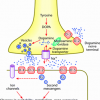To qualify as a -racetam it only has to have a 2 pyrrolidone nucleus. So, the only reason noopept isn't closely related to piracetam is because it lacks this 2 pyrrolidone nucleus. However, I personally, am not convinced that the presence, or conversely, lack thereof, a 2 pyrrolidone nucleus is enough to decide if something is a good idea or not because, even slight alterations in a chemicals structure can drastically alter its pharmacology.
Pramiracetam is complex and I believe it seems to work atleast partly in ways differant than how both piracetam and noopept mediate their effects. These subtle differences may make it a good idea or a bad idea I simply do not know. So, I would advise you only to consume chemicals you feel like you understand exactly how it works and the risks that are involved.
Piracetam has actual widespread clinical use in many countries and for a very long term at sometimes extremely high doses (e.x. 10-30 or even 60 GRAMS per DAY) for a large list of illnesses. While, I do consume both noopept and piracetam (as well as aniracetam, coluracetam, and sunifiram) ONLY piracetam has widespread medical use** *(many others have been invested experimentally) * (only referring to -racetam, sunifiram, and noopept here. Plently of other nootropics are commonly used in medicine). Therefore, the others are experimental at this point in time. I believe many of these experimental compounds have theoretical effects much stronger than piracetam and warrant my personal use. However, the amount of caution and the extent of research you do for these should be extensive. These are NOT supplements. These are POWERFUL experimental chemicals that require extensive research, care, safety, respect, and further research to top off your already extensive research.
While what I did is obviously impracticable and probably much more than what would be needed, I have probably studied my extensive, and by many what would be considered excess amounts of, experimental chemicals for well over ten thousand hours by researching neuroscience easily an average 7-16 hours / day on >90% of days for years. The wisest thing is to research as much as possible so you know whatever chemical you take as intimately as possible.
Edited by mrd1, 21 February 2014 - 04:35 AM.


















































